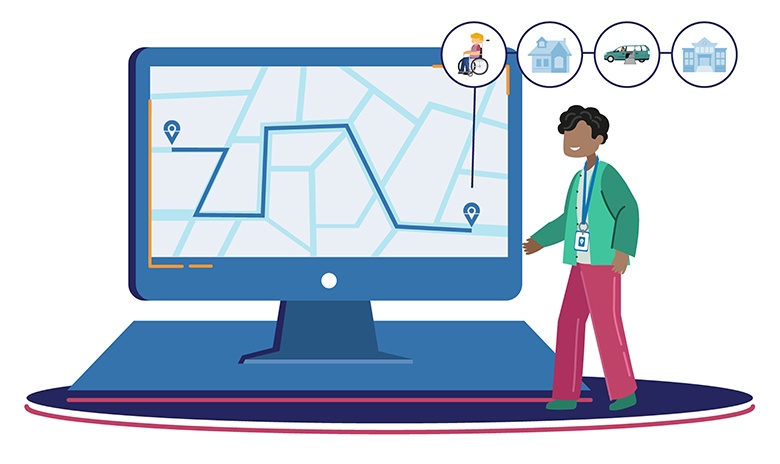Risk Management
- Effective Strategies for Combating Risk in the School Bus Danger Zone By:
The ninth annual National Association of State Directors of Pupil Transportation Services (NASDPTS) survey of national illegal school bus passes found more than 95,000 motorists ran school bus stop arms in one day in the 2023 school year. The previous year’s survey reported 83,944 passing incidents. That’s a shocking increase, especially when you consider the spotlight on this issue and the brainpower and development that has gone into trying to reduce risk to students outside the bus. Given that illegal school bus passbys are increasing and have reached an epidemic level in the U.S., it’s safe to assume a significant number of school bus related injuries every year can be attributed to the area outside the bus known as the Danger Zone. When we talk about issues and risks around the bus – the root cause is human attention, which is inherently limited. Turning the Danger Zone into a Safety Zone Safety equipment such as stop arms, amber and red warning lights, a roof mounted strobe light, and driver LED alert signage was designed to alert motorists to stop for the school bus. Safety standards, legislation, policies, driver training and bus safety education continue to be introduced to protect children in this sensitive area. Yet the bus still remarkably remains ‘invisible.’ Our cities and towns are growing. The U.S. Population grew by 1.6 million in 2023. The number of registered cars on our streets grew by 6 percent over the last five years. And driver distraction at all-time-high numbers, claiming over 3,500 lives in 2021. We have access to cost-effective technology to help us thrive amongst all this change and yet as it relates to safety school bus safety, what we’ve done to date is still not enough: children are still at risk The Stop for School Buses Act Following a 2018 fatal accident in which three students were killed and another injured after a motorist failed to stop for a school bus, the National School Transportation Association (NSTA) initiated a push for legislation to protect students outside the bus. The resulting Stop for School Buses Act was passed as a provision of the Infrastructure Investment and Jobs Act signed by President Joe Biden. As part of this Bill, the National Highway Traffic Safety Administration (NHTSA) has been mandated to research education, advocacy and technology that will enhance student safety around the bus. Directly called out in the mandate are technologies such as radar and proactive notification systems. Changing Our Approach by Adding Intelligence to the Bus We’ve been trying to tackle this critical issue as an industry for years. Stop arms, crossing gates, and cameras have each helped reduce the number of fatal injuries and improve safety, but to get the number of children killed in transportation-related crashes over the next decade to zero, we need to acknowledge that any tool or technology that relies on human attention can only accomplish so much. Intelligence is the glue that brings the value of each individual tool together; Safe Fleet Video, Alert Devices, Stop and Crossing Arms form a comprehensive view of exactly what’s going on. This might come in the form of an alert that tells the driver where the problem is (for example – rear, right side of the bus) which could also be coupled with different alarms or spoken word, such as ‘child,’ or ‘car.’ Bringing intelligence into the safety mix adds clarity and the ability to respond quickly and confidently. Intelligence also reduces sensor over-detection and excessive false alarms. And just like the value of mechanical tools, video, and sensors being better when they are all used together, adding intelligence to the mix is better when that intelligence is not just focused on detecting, but also on developing reference. This approach to adding intelligence to safety equipment helps to identify what’s really important and helps to ignore what isn’t. Approaching the Problem from a Different Angle When we talk about issues and risks around the bus – the root cause is human attention, which is inherently limited. Given our limitations, it’s easy to understand how a bus driver in the middle of heavy rain and reflecting light, struggles to keep their eyes on children as they disembark and safely cross the street, while maintaining focus on approaching traffic. Likewise, we can’t always expect young children to have the attention span to keep their focus on the bus driver until they’ve safely crossed the street. Both scenarios pose several attention deficits. Advancements in technology are paving the way to a day where we have complete control over every vehicle. But we aren’t there yet. Today, it’s reasonable to say we can’t really control the car, but we can approach the problem differently. Today we can bring mechanical tools, video, sensors, intelligence, and the technologies highlighted in the Stop for School Buses Act–radar and proactive notification systems–together to actively alert the child or the pedestrian. Building a Smart Safety Solution with Safe Fleet Relying on the combined strengths that mechanical tools, video, sensors, and intelligence bring, our solution actively engages with the driver and/or students when a warning or alert is issued. The focus instead is on directing the person or persons at risk rather than the traditional and longstanding approach of focusing on the external factors that contribute to the issue. The Safe Fleet Illegal Passing Suite is a complete, end-to-end solution that drives increased safety and efficiency value through integrations with the systems you already have on your fleet. If you’ve got cameras and recorders, stop arm violation footage is automatically captured. If you’ve got front and rear facing cameras, or a 360° view camera system, the footage integrates with the suite to give you a complete view of the event. And if you’ve got a Wi-Fi connected bus, the footage can be downloaded once the bus returns to Wi-Fi coverage. Every time a vehicle illegally passes a stopped school bus, students are at risk of injury or death. Every day over 242,000 illegal passes of Read More >
Safety
- Master the Road Ahead with the Right Fleet Management Solutions By:
Not all school districts are alike when it comes to their fleet routing and planning processes. Districts have either large or smaller fleets, and many still use manual, cumbersome systems to tackle some of the most challenging aspects of their jobs. GIS technology can bring value to every aspect of our transportation operations including routing, student location, student accountability, parent notification, field trip planning and more. School districts don’t have to bite off more than they can chew. GIS technology can be implemented in every school district at a pace that meets each district’s needs. Revolutionizing School Transportation with Modern GIS Solutions Budgets are tight everywhere, driver shortages are a nation-wide concern, and vehicle maintenance and downtime can be seriously problematic for any district. Cutting wasted effort and inefficient processes is an absolute necessity and modern GIS systems can help you do just that. How would knowing which of your routes are optimized, and which aren’t, help your operations? How would having access to real-time data help you improve parent/school communications? And how would being able to re-route with ease, while factoring in road usage/rules, help you better protect your students on their way to school? Let’s look at what this might look like for a school district with the options that are currently available. Streamline Operations with All-in-One Solutions All-in-One Solutions enable the user to query several databases depending on the desired outcome. These systems feature an interactive geographic mapping system that graphically displays database queries, tracks vehicles and students in real-time and provides a live view on-board a bus during critical events. GIS technology can shave days, even weeks from planning efforts, reducing it to a matter of hours. Using an all-in-one solution, transportation departments can produce ‘what if’ scenarios, plan next year’s routing without disturbing the current year’s plans, and respond to urgent situations better and faster. Safe Fleet® Compass™ is an all-in-one esri-based, routing and planning system that delivers routing, vehicle tracking, video surveillance and vehicle status in a single interface. A transportation department can view planned vs. actual routes in real-time, integrate with existing student information databases, optimize route and student assignments, and provide full audit trails. Scaling Up: Meeting the Needs of Larger Districts Comprehensive routing and planning systems for large districts are complex, take time to implement, require more involved training to use, and require more budget. Some transportation departments want and need these sophisticated systems, but for budgeting purposes, they need to phase their implementations into manageable pieces. Compass can be implemented in two phases: Automated Routing and GPS Tracking Compass routing can connect to tracking systems already installed on fleet vehicles. This integration provides time, location, direction, and vehicle speed data in 20-30-second intervals. Depending on the equipment and sensors installed on the fleet, the information displayed could also include stop arm extension, signal light, door opening and video recording status. When this information is overlaid with mapped route plans, a fleet management team can instantly see deviations and address them accordingly. Districts that use GIS-based routing systems can realize ROI almost as soon as they start using this type of routing system. Student Tracking and Viewing This functionality adds an additional safety layer to the systems you are already using to protect students while they are in your care. If a bus breaks down, or the unthinkable happens, you’ll have virtual eyes on the situation immediately. With Safe Fleet Student Ridership Tracking, you’ll know where the incident occurred, you’ll know what happened, and you’ll know who has been impacted. Knowing if a student is on a bus, where they got on or off the bus, if they missed the bus and never got on it, as well as information on everyone else on the bus in the event of an emergency, is invaluable and cannot be measured in dollars. Empowering Smaller Districts Not all transportation departments want or need an all-in-one solution. While others may want an all-in-one, but don’t have the budget or resources to implement all at once. School districts have choices. They can implement an all-in-one system in manageable pieces, or select a simpler, easy-to-use planning tool. Safe Fleet Path captures route maps from vehicle GPS and student tracking data. Within days of implementing the system, a transportation department can begin to realize route efficiencies, access accurate driver directions, and reduce parent concerns by providing accurate school bus arrival and departure times. School districts can even pair Safe Fleet Path with a student accountability mobile app that automatically notifies parents when their children get on and off the bus. The benefits of GIS data can be experienced in our daily lives in many ways, and that includes school transportation departments. Knowing exactly what to do and who to contact in real-time can make a huge impact on final outcomes. This can truly mean the difference between life and death. Kerry Somerville is senior product manager for Safe Fleet. Contact us to learn more. We’ll steer you in the right direction. Visit www.SafeFleet.net for more information
Special Needs
- Mitigating Risk in Alternative Student Transportation By:
Many districts across the country are using alternative transportation options, but there are still quite a few that are leery of the risk it could mean for them. There are things that districts can do to help mitigate the risks associated with transporting students, specifically when it comes to small-capacity vehicles. Whether the district is providing transportation, or it’s being contracted with a compliant provider, there are industry standards that should be met to help mitigate risks to the district. • Insurance: While insurance minimums for small-capacity vehicles are smaller than those of a bus, districts should make sure all state requirements are met for personal auto-liability insurance minimums. The district should look for sufficient commercial auto policies for both the provider and/or any subcontractor that provides transportation in small capacity vehicles. The district can also request to be added as additionally insured on the provider’s commercial auto policy. • Proactive Drug Testing: A zero tolerance drug and alcohol policy, that only requires reporting to either the provider or the authorities, is insufficient when transporting students. Zero tolerance policies should be coupled with drivers’ enrollment in a drug and alcohol consortium that requires pre-employment, post-accident, reasonable suspicion, and random drug screening. • Driver Background Checks: National, state, and county background checks should be conducted for all drivers prior to them transporting students. • Driver Sex Offender Registration Check: Before transporting students, all drivers should have to pass a sex offender registration check. • Proper State Regulations: Not all states have existing regulations surrounding alternative student transportation. Check the regulations in your state and begin to advocate for the creation or modernization of regulations that will help keep your students safe while allowing for flexibility in routing and transportation efficiency. Technology also plays a part in helping to reduce risks associated with transportation. Different types of platforms available to parents or district staff can help ease tensions and provide information that can’t be shared in any other way. • Parent App: Providing parents with information about their child’s driver, the vehicle they’ll be riding in, and GPS tracking information not only helps mitigate risk, it also helps eliminate phone calls and parent concerns. It can enhance trust and peace of mind for all parties involved. • District Portal: District staff should be able to monitor the location and arrival time of students. This can enable timely feedback and problem-solving opportunities. Including valuable reports can also help districts apply for funding reimbursement, track efficiency, track budgets, and watch for attendance patterns. • Routing Software: Not all routing software can create routes in small-capacity vehicles. Be sure your district or provider is using software that is up-to-date and able to create smaller routes. • Cameras: Cameras are a simple piece of technology that can help keep both drivers and students accountable for their behavior while in the vehicles. While technology plays a very important role in mitigating risk by allowing districts to track students, ensure compliance with provider and state driver standards, and look at reports to keep everyone accountable, it cannot replace the team of individuals helping to make every ride to and from school the safest possible. Dedicated transportation staff at both the school district and the contracted provider are a critical piece that cannot be overlooked. • Regular Check-Ins: Scheduling regular check-ins with your transportation provider allows for open lines of communication that can help address things like budget planning, specific student needs, and potential opportunities for optimization. • Continuous Program Monitoring and Evaluation: Transportation teams that take the time to monitor and evaluate their alternative programs (including the service providers and drivers they work with) on a regular basis find ways to improve their programs and offer even better services to students and families. It also allows for them to find attendance patterns and possible opportunities for better communication with families and district staff. • Timely Feedback and Recognition: While timely feedback can depend on the situation, when the entire team – internal and external – is consistently and openly communicating, issues and complaints are handled right away creating happier parents and safer students. Comprehensively, risk mitigation in alternative student transportation starts with ensuring compliance to state requirements and industry standards, includes technology that informs and tracks, and reaches through transportation teams and the way they collaborate. Districts can take proactive measures to help mitigate risks within their transportation programs by being transparent, fostering open communication, and addressing challenges promptly. By embracing a holistic strategy that combines both technological solutions and human oversight, districts can create a safer and more efficient environment for students, ensuring their well-being on every journey to and from school. Morgan Judge is director of compliance, regulation, and policy for EverDriven. Learn more at www.everdriven.com/safety.
Technology
- Wilson School District Tracks Service with Transfinder By:
Wilson School District, located in Berks County of northeastern Pennsylvania, operates approximately 75 runs per day with a mix of 72 passenger vehicles, vans, mini-buses, and a mid-size CDL vehicle. The transportation department services between 3,700 and 4,200 students (depending on the sport season) between a high school, two middle schools, and five elementary schools. With a board, superintendent, and administration that wholeheartedly supports transportation, the district’s transportation departmentrequires a robust technology base to accommodate its many “moving parts.” As such, the department has partnered with Transfinder for more than a decade to ensure routing, service, maintenanceand information optimization. Randy S. Williams, Sr., M.Ed, PCSBA, PCSTP, director of transportation for Wilson School District, said that the district had been a longtime user of the Routefinder routing solution before becoming one of the early adopters of the upgraded Routefinder PLUS—an easy-to-use, full-featured, super-fast, browser-based transportation department solution—in 2020. Routefinder PLUS uses artificial intelligence optimization (AIO) to automate the process of developing efficient, cost-friendly school bus routes for school districts. AIO uses artificial intelligence to automatically optimize school bus stops and routes with the most advanced technology available. Using smart School Bus Routing, AIO creates the shortest routes and fastest order of stops while minimizing drive time and mileage. The upgrade to Routefinder PLUS lead the transportation department to begin adding other solutions to integrate with its routing, first replacing its DOS-based field trip software with Tripfinder. Tripfinder, Williams said, helps to manage field trip requests, approvals, and resource allocations. It provides Wilson personnel secure access to data via a browser or mobile device, enabling them to submit requests, identify students for trips, and track approvals. Keeping Vehicles Safe and on the Road The district also upgraded its Servicefinder maintenance optimization software, followed by the additions of Stopfinder (a parent-facing app) and Viewfinder (providing a “big picture” of the district’s transportation operation), and a recently completed pilot project of Wayfinder (a system which manages and completes forms such as discipline or pre/post inspection, which the district is still evaluating). “Safety is the most important thing in transportation, and keeping vehicles on the road is part of the safety process,” Williams said. “Servicefinder allows us to identify and reduce excess inventory, but also to proactively predict when a bus will fail mid-route and prevent such a failure. It gives me a great bird’s eye view, but also prevents us from having catastrophic failures.” “We have been heavily using Transfinder products for quite a few years,” Williams continued. “The last four years have been very extensive and provided a big benefit to us, whether it’s through routing, efficiencies, parental communications, parental sharing of student stop information, busing information, vehicle fleet information as far as services and parts inventory which we can gather out of Servicefinder as well, to help the operation.” Onboarding and Implementation With so many software rollouts over the past four years, it has been imperative for Wilson to work closely with Transfinder on training and implementation. “Initially, when we implement a new program, we have weekly webinar calls—sometimes multiple times a week—and we learn the product through the first several calls and they’re webinars. After the first couple of calls, we start to use our data and doing the things that we’re learning with the trainer.” “The beautiful thing about Transfinder is they’re very responsive, whether it’s Routefinder PLUS or any of the other solution, and they are only an email or a phone call away,” Williams said. “Sometimes you can get them on the phone immediately, but if you leave them a voicemail, they will return your call within 24 hours. If you send them an email, they will respond. If you let them know it’s urgent, then their response is quicker. Their tech support is very good at getting back to us normally within the same day.”











